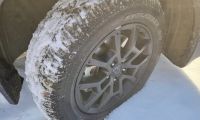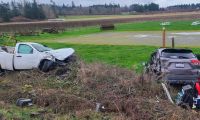Why Did Tesla Remove Sensors From Its Cars?
Did you know that Tesla vehicles have long come standard with a series of ultra sonic sensors that help detect objects and proximity? These are getting removed in 2023 vehicles.
In an interview between Andrej Karpathy and Lex Fridman, there was a discussion of why Tesla removed its ultra sonic sensors from its vehicles. This will cause Tesla vehicles to rely solely on vision with cameras.
Andrej talks about this and thinks that one would think the sensors are an asset to you. If you consider the entire product, the sensors are a liability. They require a supply chain, they can have problems, they are part of the supply chain, they require integration and teams to write firm ware to use them. There is bloat that comes with using them.
Elon Musk is really good at simplifying things. He understands the entropy that occurs in organizations when you have extra parts. When you think about the totality of the cost and maintenance of the sensors, it is a liability. In this case, vision can give you everything the sensors can.
Bloat in the Data Engine
Lex and Andrej talk about the data engine and the ultra sonic sensors. The sensors require additional code and storage and bloat everything. It can be very distracting if you want to get just vision to work. If you are making progress, yet still have to support sensors, you have extra code that is needed and that bloats the system.
Simplifying the system in the long run seems to be the right solution. This applies generally across most systems. Lex asked about Lidar and if it is needed. Andrej is confused by the debate. He thinks the debate is really do you have a fleet to collect data or not and that is more important than whether you have Lidar or not.
Similar to the discussion of radar, Andrej thinks that Lidar doesn't offer much extra information. It adds cost, bloat, creates entropy, and is similar to the ultra sonic sensors in the extra cost and bloat it adds. Andrej thinks that other companies are going to eventually drop Lidar.
Lex asked if you can build a big fleet that can collect data and have Lidar be part of that collection process. Andrej looks at it that vision is necessary and that the world is designed for human eyes and consumption. Vision gives you all the data you need to drive you car. You would have to be really sure to add an additional sensor of any kind.
In the end, Andrej says the answer is no to extra sensors. When asked about high definition maps and geo-fencing, Andrej said that that is not scalable. Pre mapping the environments is not going to work because you have to remap the environment. A vehicle most be able to adapt to the world around it. If you need to maintain a centimeter accurate map of earth, that is a huge dependency that you are taking on. Do you really need this? Humans don't need it...
What do you think about this interview between Lex Fridman and Andrej Karpathy?
For more information, see this video by Lex Fridman:
Leave your comments below, share the article with friends and tweet it out to your followers.
Jeremy Johnson is a Tesla investor and supporter. He first invested in Tesla in 2017 after years of following Elon Musk and admiring his work ethic and intelligence. Since then, he's become a Tesla bull, covering anything about Tesla he can find, while also dabbling in other electric vehicle companies. Jeremy covers Tesla developments at Torque News. You can follow him on Twitter or LinkedIn to stay in touch and follow his Tesla news coverage on Torque News.











